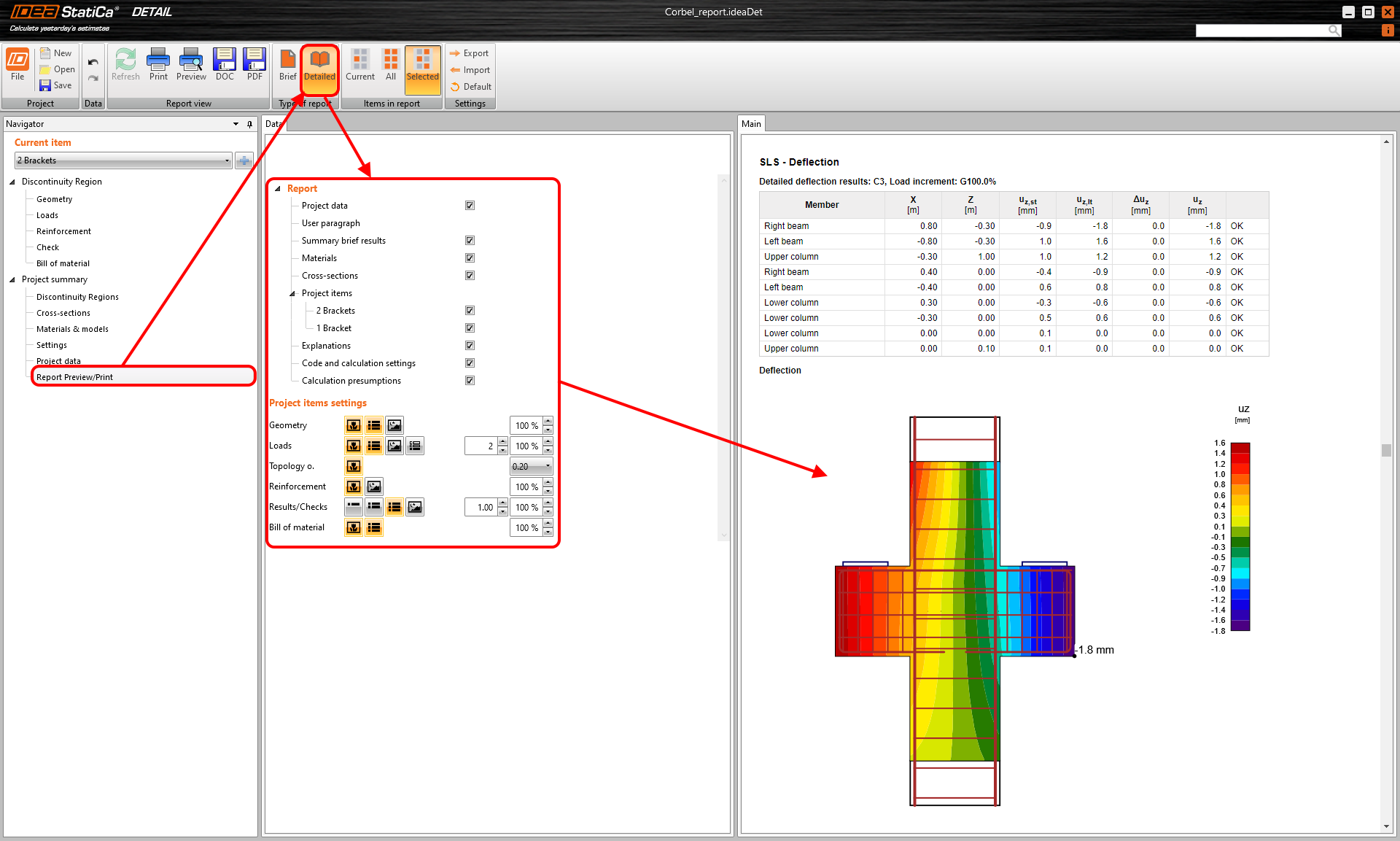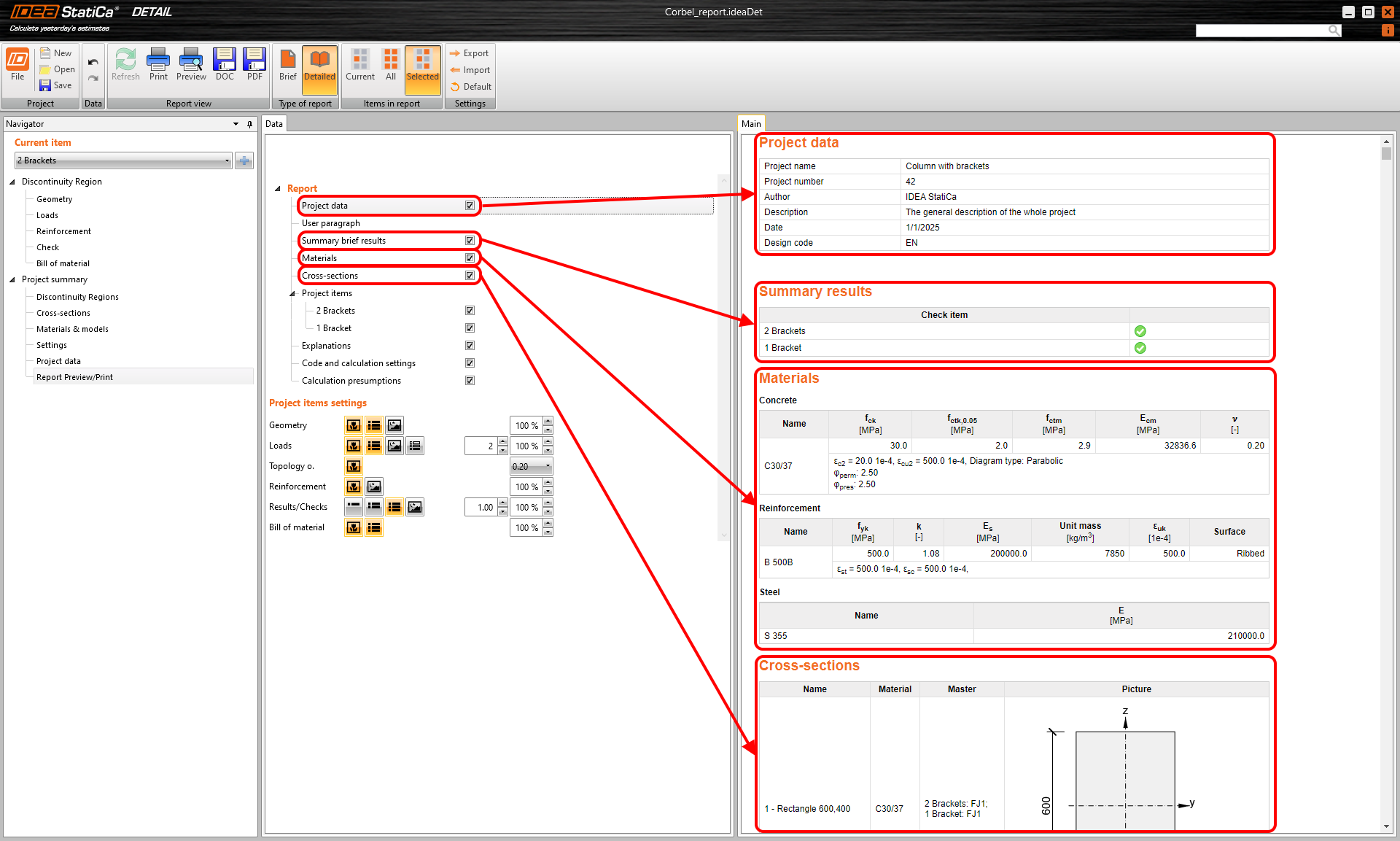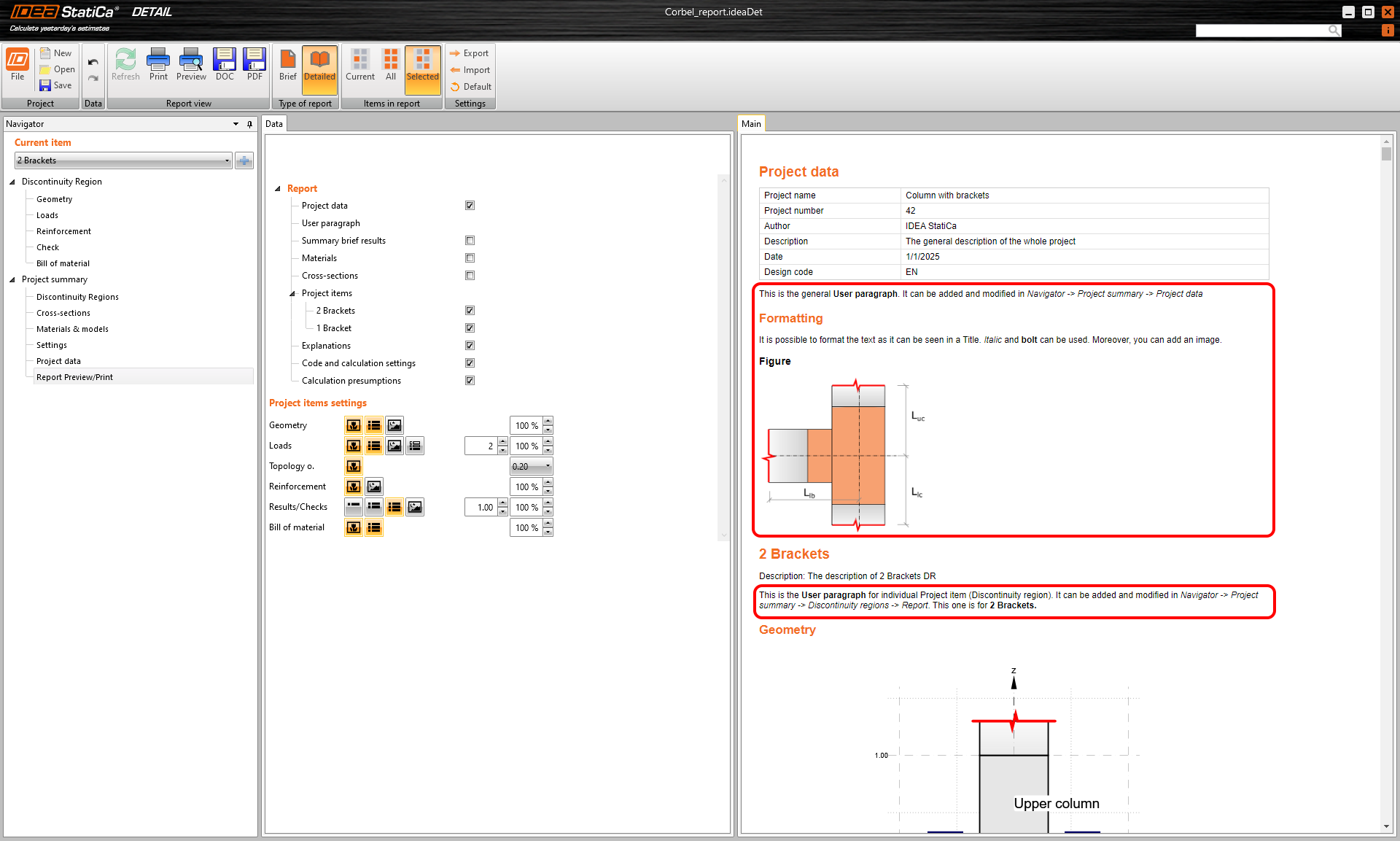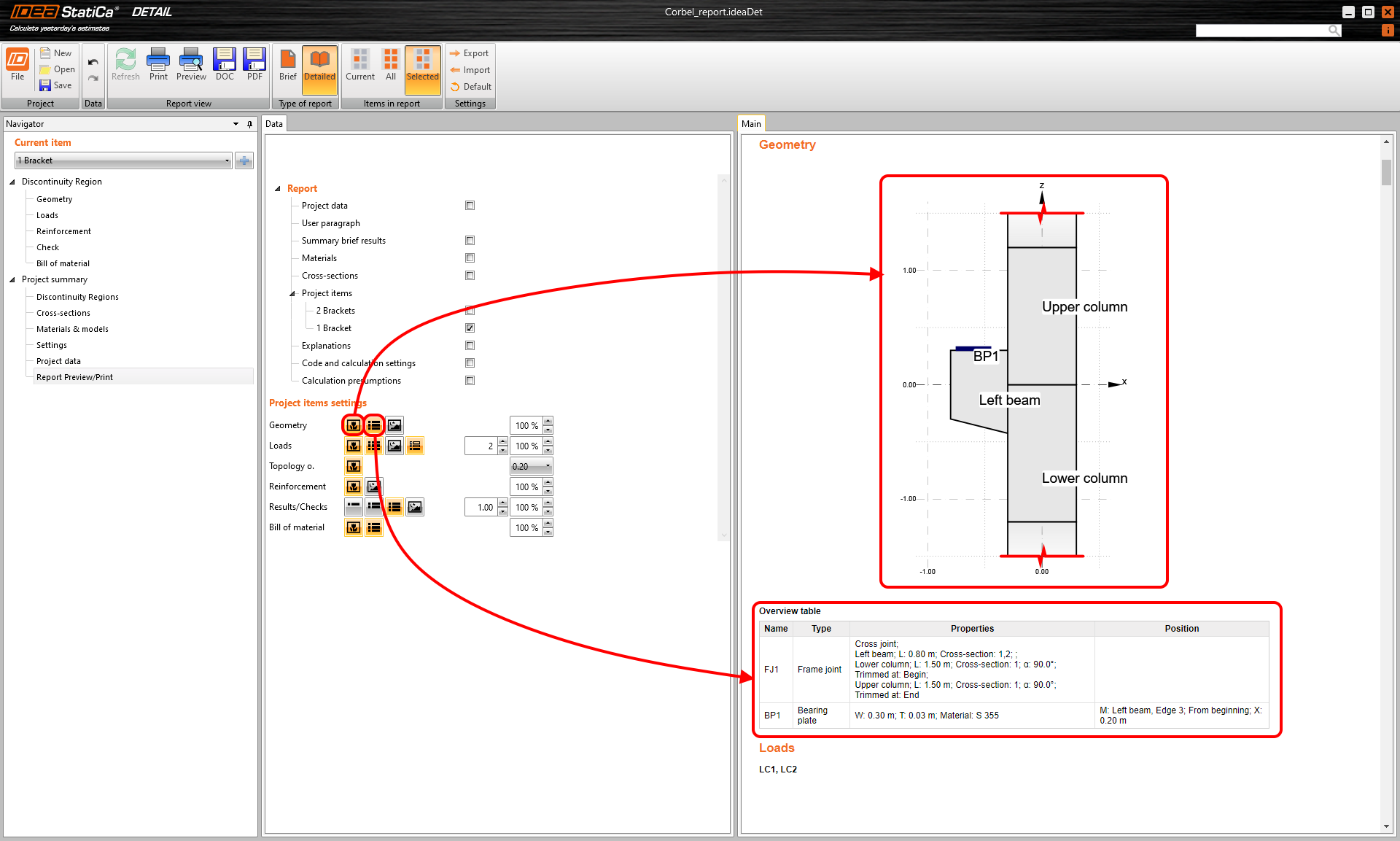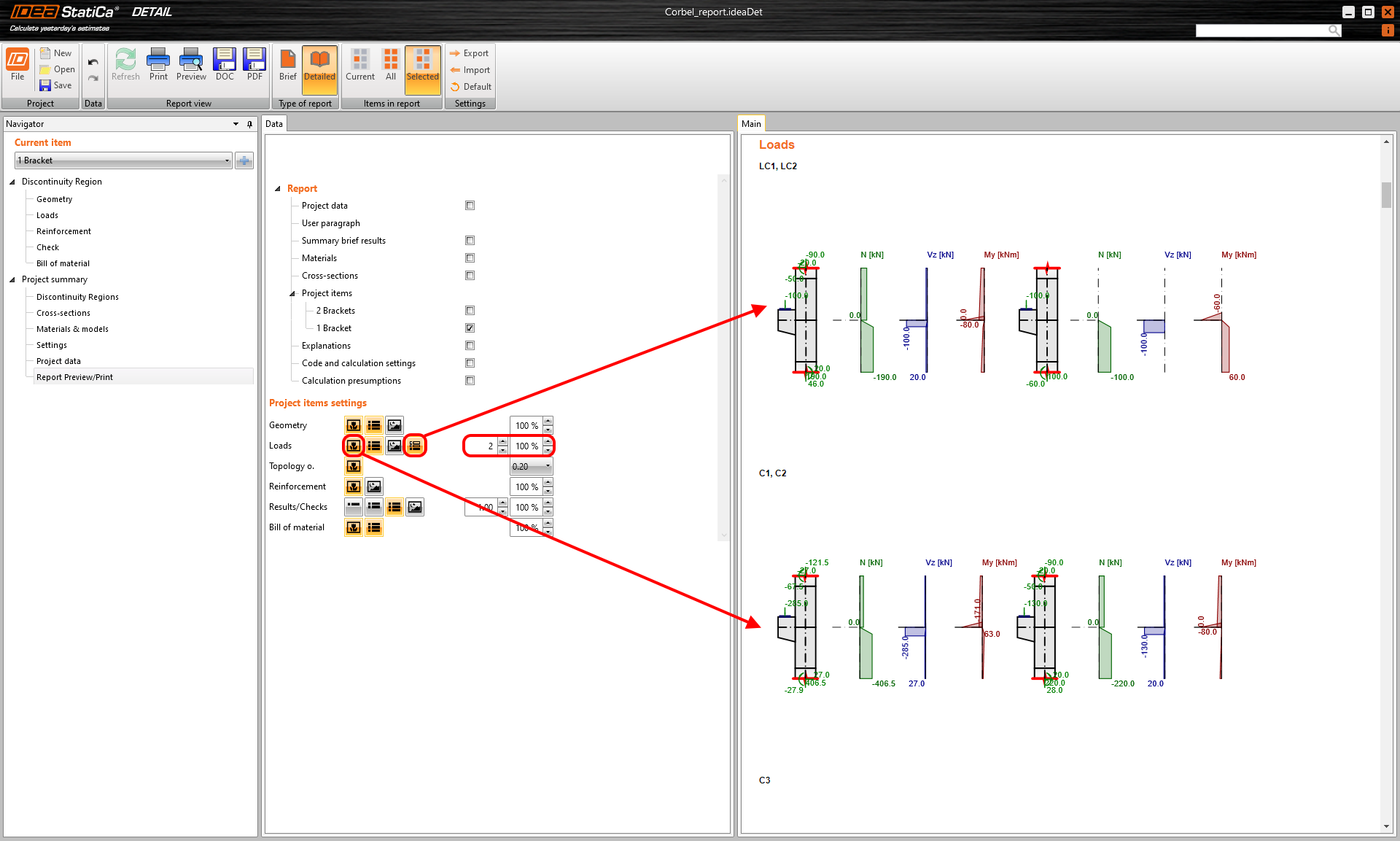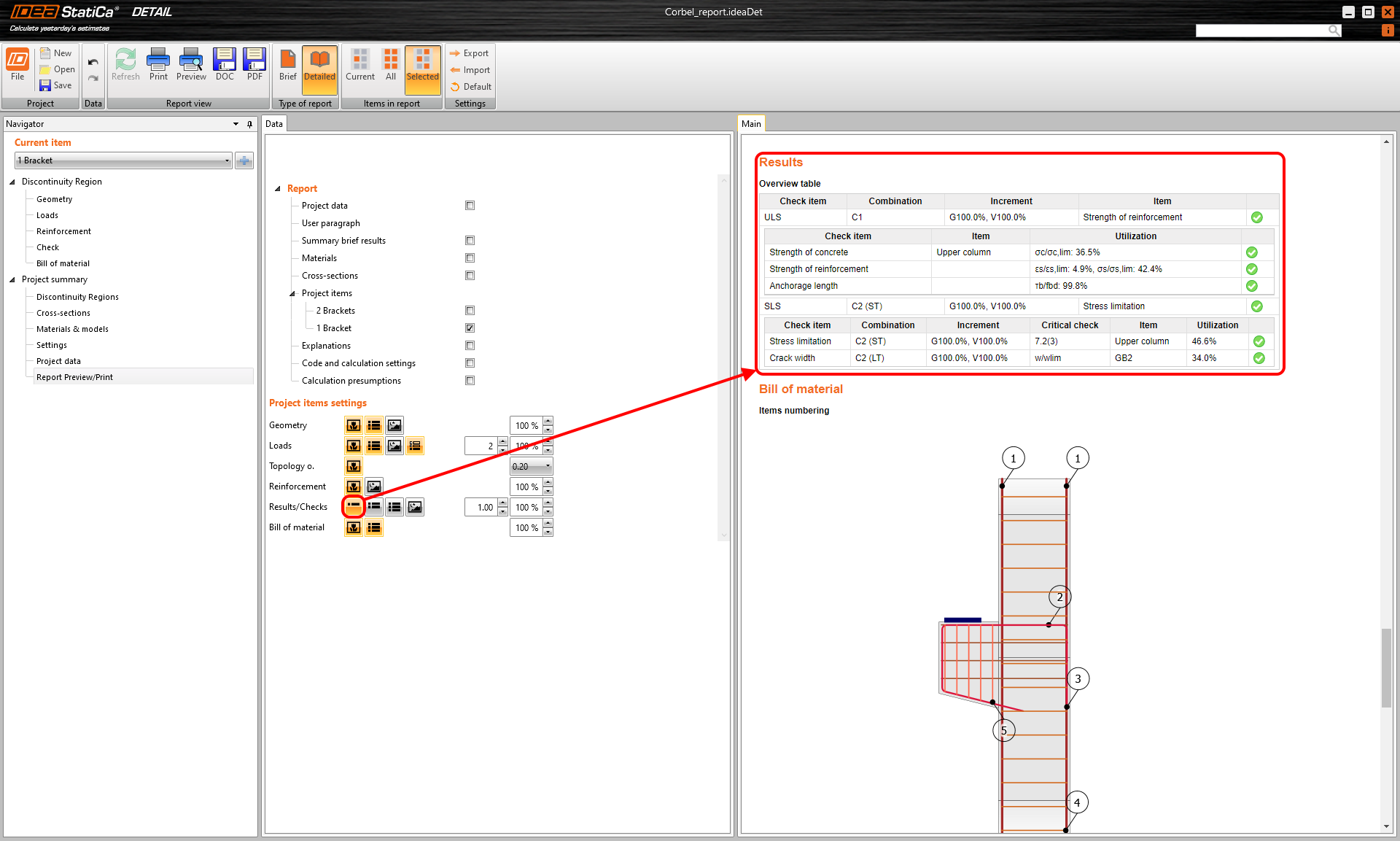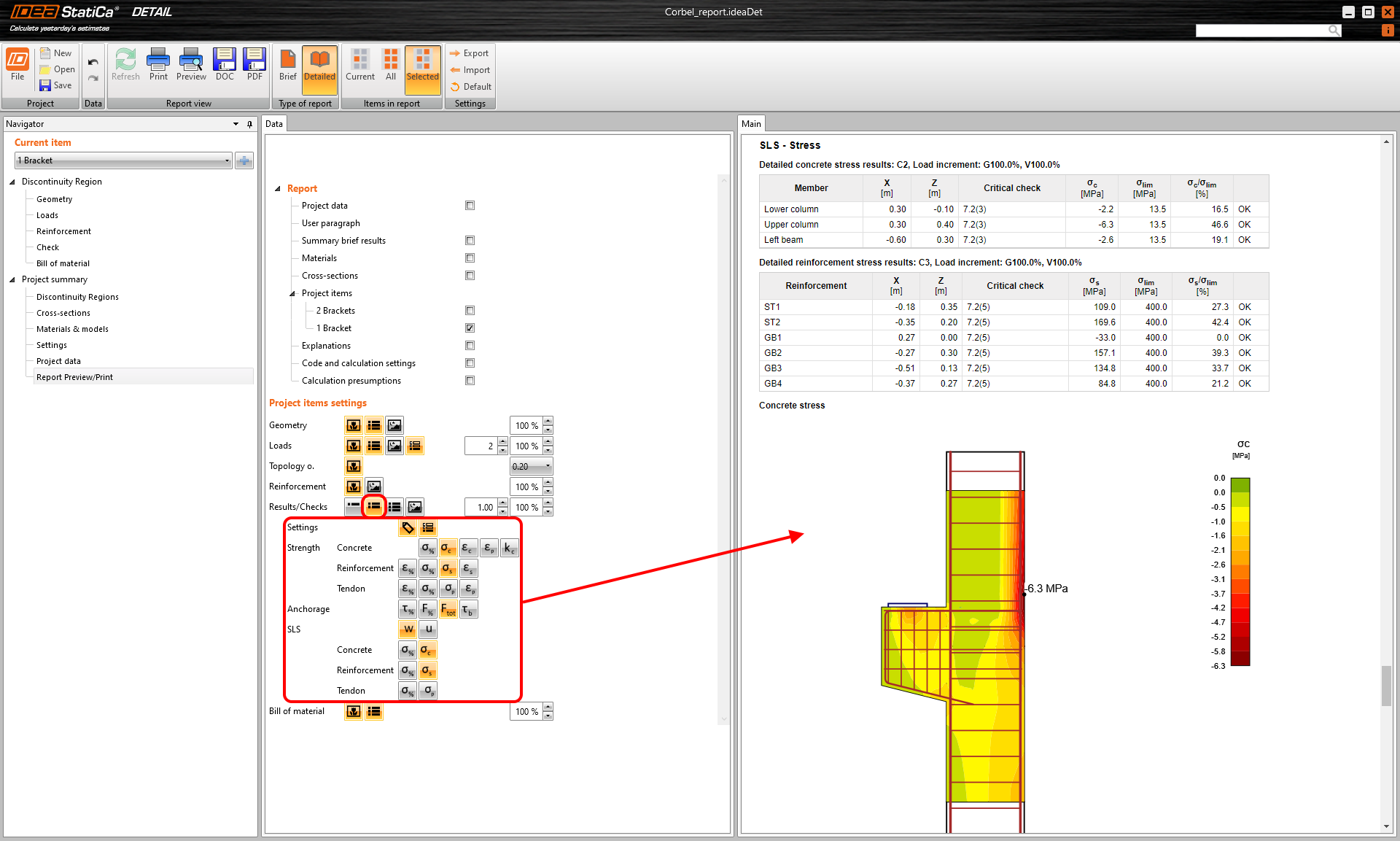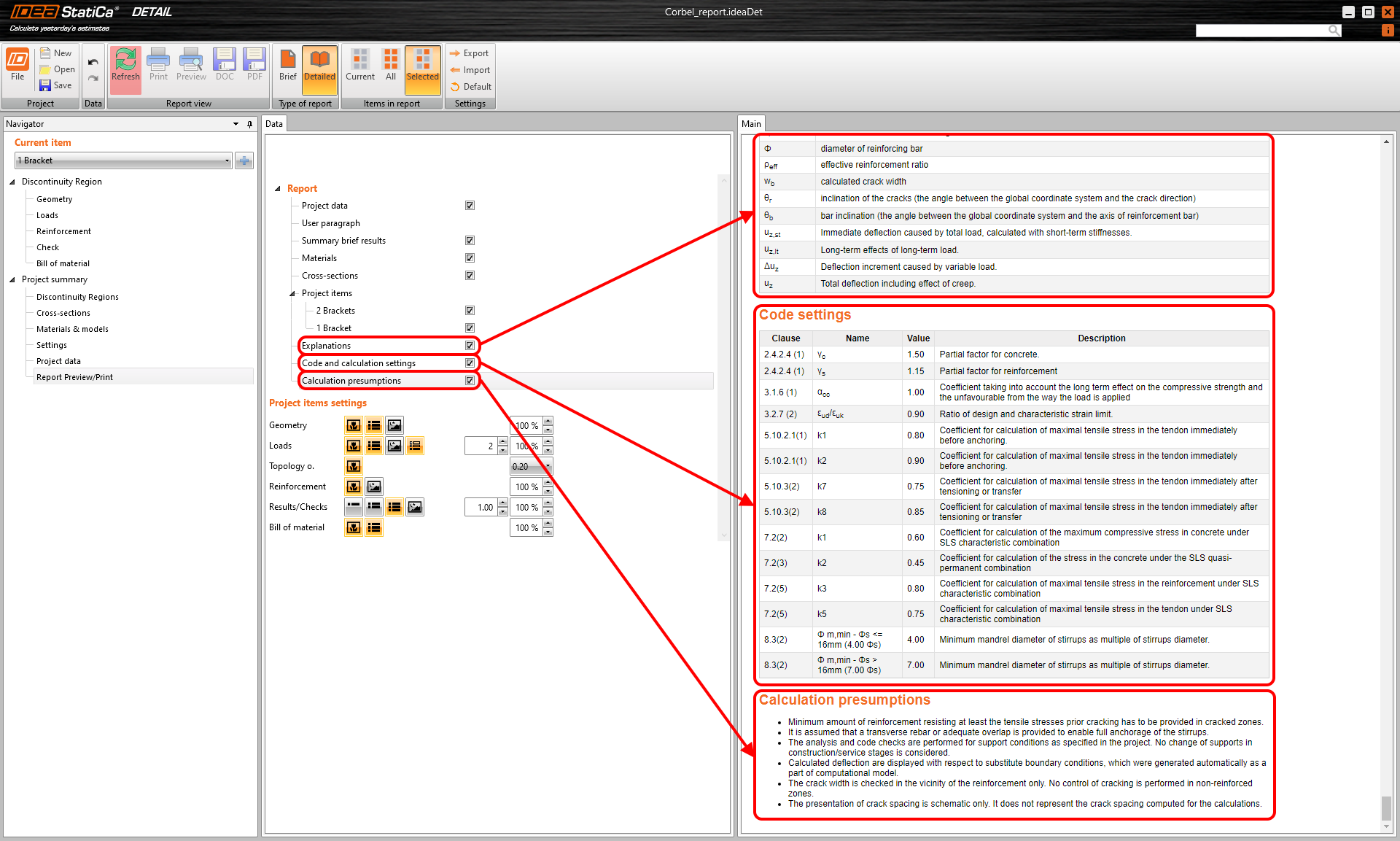Report in Detail application
Once the discontinuity region is designed and code-checked, it is time to create the report. There is no need to do it manually by print-screening images, creating tables, and writing tons of text. Simply use the report feature in the application. You need to set the report - what to display or not. Images, tables, and descriptions are created automatically. You can even add custom images.
The basic structure of the report
First, select the type of report. There are two options.
- Brief report
- Detailed report
A brief report is a short summation of the project and its results.
Or you can generate a detailed report, where you can put detailed information about the project and its results.
Let's look at other setting options.
Report Introduction
At the beginning of the report, you can find the introduction and overview of the project as Project data, Summary brief results, Materials, and Cross-section.
User paragraph
It is possible to add a User paragraph with additional information - below the Project data table and below the description of the individual project item.
As shown in the figure, go to Project Data to define the general one.
To set the User paragraph for the individual project item, go to the Discontinuity regions, select the discontinuity region, and write the paragraph.
Project items settings
In IDEA Statica Detail, there is an option to have more project items (Discontinuity regions) in one file. And thus also, for the report, it is possible to generate all items in the project or only selected ones. The selection is made in the Data tab in the report settings.
Let's go through individual project item settings.
Geometry
You can display the image of the geometry of details or subarea and the geometry table. The relative width of the picture can also be controlled.
You may have noticed that the third button is turned off in the figure. This button allows you to add user-defined pictures to the chapter via the gallery feature.
Loads
It is possible to display pictures or tables of any load combination. The relative width of the picture can be controlled, as well as the number of pictures in one line. In addition, you can see load cases included in active combinations.
Topology optimization
The button turns on the displaying the Topology optimization for all assessed combinations and specified volume level.
Reinforcement
You can enable a reinforcement scheme or add user images from the gallery.
Results/Checks
There are three ways to display results.
- Brief results - only overview table
- Selected results
- Complete results
The first option is shown in the following figure.
The second option allows you to select exactly what needs to be displayed.
The last option simply adds all of the results to the report. Again the relative width of the picture can be controlled, and moreover, the Z scale can be exceeded.
Bill of material
Finally, you can add a bill material picture with numbered items and the tables.
Click on the Bill of Material button in the navigator to check out the weight, number of items, shapes, and lengths of reinforcement. Besides that, a drawing of the reinforcement layout, including shapes of reinforcing bars, can be exported from IDEA StatiCa Detail to dxf file. The drawing can be further modified.
Conclusion of the report
The final part of the report focuses on Explanations of used symbols, Code and calculation settings, and Calculation presumptions. All parts can be turned on or off.


